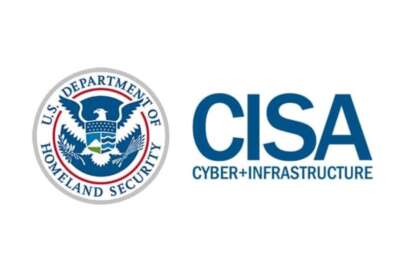EXCLUSIVE: Chopra’s equation: Ideas + Relevance=Innovation
Federal CTO details four broad areas of focus to bring new approaches to improve government services and society. He says it\'s a matter of agencies learning how to...
wfedstaff | June 2, 2015 9:10 pm
By Jason Miller
Executive Editor
FederalNewsRadio
NORFOLK, Va. — Coming soon to federal, state and local governments: the application store where thousands of vendors and entrepreneurs developed innovative software tools to make government services better, faster and cheaper.
That is how Aneesh Chopra, the federal chief technology officer, explains in a straightforward and simplistic way how he sees innovation affecting government.
“It may be an app someone builds and you can download and improve it marginally to meet your needs and the marginal cost of that adoption should be low,” says Chopra in an exclusive interview with FederalNewsRadio. “We are not saying one vendor rules them all, but we want to have thousands of entrepreneurs to bid on this kind of work. It may be more modest in scope but they will be able to solve discreet problems, and over time I imagine having thousands of apps all speaking to an issue. We will get there, but it still is a vision at this time.”
Chopra, who was confirmed by the Senate May 21 to be CTO and Associate Director for Technology, still is developing specific goals, but detailed four broad priorities Tuesday at the Management of Change conference sponsored by the American Council for Technology and the Industry Advisory Council (ACT/IAC).
“I’m in listening mode and visiting with colleagues right now looking to see how I can be helpful in advancing the President’s agenda,” he says.
Chopra’s four priorities include:
- Making sure the government transforms the nation’s economy through technology innovation. This includes relooking at the federal research and development agenda and figure out how to drive innovation through policy, Chopra says.
- Bringing innovation to the President’s priorities such as health care, climate change, energy, economic improvement and education. “Game changing ideas often don’t need to change policy, but can work within existing policy and accomplish the goal better, faster and cheaper,” he says.
- Delivering a reliable, resilient and trustworthy infrastructure. Chopra will focus on helping to develop a broadband plan by February and on cybersecurity. He says his work on cybersecurity will emphasize “game changing research and development, and collaboration with the private sector” to improve critical infrastructure.
- Creating a culture of open and innovative government. Chopra says he will work with federal chief information officer Vivek Kundra, the General Services Administration and others to “build capacity in the federal government for a culture of openness transparency.”
President Barack Obama already kicked off the open government initiative by challenging the major agencies to develop one significant transparency initiative in 2009.
Chopra says he is charged with working with agencies to come up with those initiatives and ensure there are results in a matter of weeks, not months or years.
He says this program is one approach to getting agencies to buy into the concept of innovation.
“As we release the projects and get results, we instill greater confidence that these things are possible,” Chopra says. “That is culture change.”
He uses his experience with the Virginia Commonwealth government as an example of this approach working.
Chopra says Governor Tim Kaine created a $3 million innovation fund and asked commonwealth agencies to submit ideas.
“The first year we offered grants to agencies, agency heads applied for relatively lame concepts that were unfunded things that the budget department said ‘no’ to,” he says. “We didn’t fund many of those projects because we didn’t want to be the second door for bad budget ideas. But after we tried to educate folks on the spirit on this, folks more junior in the organization had comfort that they could present ideas and agency heads would champion them. Now they have a robust portfolio of 30 projects that will calculate 4.8 to 1 return on taxpayer investment.”
He adds that in less than two years state employees embraced innovation.
Part of the approach to bring innovation to every agency is having ideas that are relevant.
“Relevance is defined by outcome goals or, in my case, presidential outcome goals,” Chopra says. “We have clarity around relevance or we are in the process of getting that kind of clarity as agencies rethink their approach to outcomes based management. Ideas can be technology based or not technology based. The culture either welcomes new ideas or prohibits them from kissing the light of day. But by having an organization, a CTO, that essentially is a safe place where ideas can match up with relevance is the challenge at hand.”
He adds that his office will look at best practices from the public and private sectors, and try to emulate them in government. Sometimes the innovation may happen at the state and local level with minimal contribution or impact on the federal agency, or the innovation will cut across all levels of government.
Chopra says agency CIOs may drive the innovation and they may not; He says it depends on the agency leaders’ goals and how they want to direct the changes.
“What we need to do is have a thoughtful process of identifying what we are trying to accomplish, what resources we already have, what we can deploy and what new needs to be introduced to achieve those goals,” Chopra says. “Some agencies will want to bring on board this type of capacity. We’ve already seen it with Alec Ross at the State Department as the senior innovation officer. His focus is on mission and goals not necessarily provisioning of IT.”
Chopra also wants to work with industry. He says there are two ways vendors get their products to the government market: through procurement and through research and development.
“I want to be the voice for their ideas in the gray areas in between,” he says. “For vendors with products they may have something cooking in oven that is not quite ready for prime time, they should think of the federal government as a potential partner for prototyping or beta testing some of those ideas that still are cooking. We will think through the process of getting that done in way that is compliant with rules and regulations we have before us.”
He adds that service providers may be able to donate or volunteer expertise or skills to help the government meet its goals.
—–
On the Web:
FederalNewsRadio – WFED talks with federal CTO Aneesh Chopra (Includes the first part of the exclusive audio interview.)
FederalNewsRadio – Senate confirms federal CTO Chopra, several others before break
FederalNewsRadio – Obama amends order to include CTO
White House – Office of Science and Technology Policy
(Copyright 2009 by FederalNewsRadio.com. All Rights Reserved.)
Copyright © 2025 Federal News Network. All rights reserved. This website is not intended for users located within the European Economic Area.





